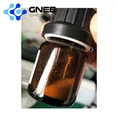Chemical properties
Solubility: Apixaban has a certain solubility in different solvents, for example, it can be slightly soluble in methanol and DMSO.
Acidity coefficient (pKa): Apixaban has a high acidity coefficient, with a predicted value of 15.01±0.20, indicating that it mainly exists in anionic form at physiological pH.
Stability: Apixaban needs to be refrigerated during storage to maintain its stability.
Specific applications
Medical field: Apixaban is mainly used to prevent and treat thromboembolic diseases such as deep vein thrombosis, pulmonary embolism, atrial fibrillation, etc. As a direct factor Xa inhibitor, Apixaban can selectively inhibit the activity of coagulation factor Xa, thereby blocking the coagulation cascade reaction and achieving an anticoagulant effect. Compared with traditional anticoagulants, Apixaban has better safety and efficacy, and does not require frequent monitoring of coagulation function.
Clinical research: In clinical studies, Apixaban also showed excellent results. For example, in clinical trials for patients with atrial fibrillation, apixaban significantly reduced the risk of stroke and systemic embolism compared to warfarin, while also having a relatively low risk of major bleeding. In addition, in clinical studies for patients undergoing knee replacement surgery, apixaban also showed good results in preventing venous thromboembolism.
| Molecular Formula | C25H25N5O4 |
| Molar Mass | 459.5 |
| Density | 1.42 |
| Melting Point | 235-238°C |
| Boling Point | 770.5±60.0 °C(Predicted) |
| Flash Point | 419.764°C |
| Solubility | DMSO 18 mg/mL Water <1 mg/mL Ethanol <1 mg/mL |
| Vapor Presure | 0mmHg at 25°C |
| Appearance | Solid |
| Color | White to Off-White |
| pKa | 15.01±0.20(Predicted) |
| Storage Condition | Refrigerator |
| Refractive Index | 1.705 |





